I’ll walk you through lawn basics, sharing tips and tricks from my dirt-under-the-nails experiences.
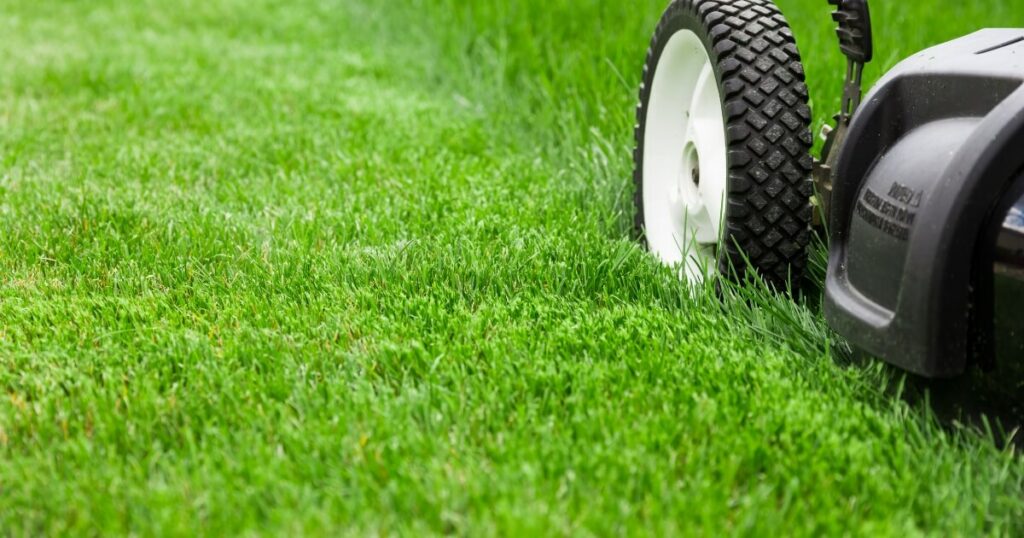
Keeping your turf in tip-top shape is more than just a nod to curb appeal. It’s about creating a lush, healthy space where memories are made and flip-flops fear to tread.
If you’re new to the whole lawn whisperer scene, this guide will be your new best friend. Expect clear advice on how to start, maintain, and enjoy your patch of green heaven. Let’s get those grass blades dancing!
Understanding Grass Types
Grass is not just grass—oh no, my friend! There’s a whole lineup of species, each with its own preferences and pep.
Some like it hot, while others thrive in cooler temps. Some are high-maintenance divas, and others are more of the low-key type.
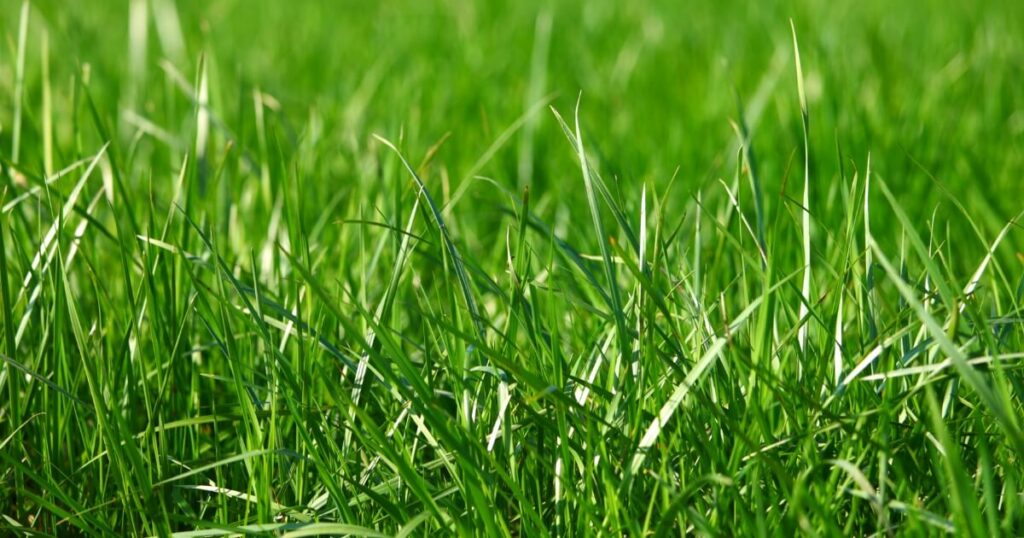
Let’s break down some common grass species you might find at your local garden center:
- Kentucky Bluegrass: A cool-season favorite that loves the sun and boasts a beautiful blue-green hue.
- Perennial Ryegrass: Quick to germinate and often used for overseeding. It’s a tough cookie in cold weather.
- Fescues: With fine, tall, and hard varieties, these grasses are adaptable and shade-tolerant.
- Bermuda Grass: Loves heat, handles drought like a champ, but goes dormant faster when temperatures drop.
- St. Augustine Grass: A warm-season turf with wide blades that enjoys the sun but also does well in moderate shade.
- Zoysia Grass: This one’s a slow grower but creates a dense carpet that can withstand heat and foot traffic.
How to Choose the Right Grass for Your Climate and Soil
Selecting the perfect grass for your lawn is like picking out a pet. You’ve got to match its needs with your ability to provide care.
Here’s how you make that match:
- Check Your Zone: The USDA Hardiness Zone map is your go-to resource. It helps determine which grasses will live their best life in your area.
- Sun vs Shade: Observe how much sunlight your yard gets. Full sun? Partial shade? This will narrow down your options.
- Soil: Get to know your soil type. Is it sandy or clay-heavy? Different grasses have different soil preferences.
- Watering: Consider how much time you’re willing to spend watering or if you want something more drought-tolerant.
- Foot Traffic Factor: Got kids or pets who love lawn Olympics? You’ll need something durable that can bounce back from wear and tear.
If you’re having a tough time figuring it all out, your local extension office or garden center can be super helpful when it comes to choosing the right grass!
Soil Health and Preparation
A healthy lawn begins with healthy soil, so let’s get our hands dirty and talk about what makes your grass grow.
First up, you’ve got to play detective with your dirt. Is it sandy and loose, or more like clay that sticks together? Maybe it’s the goldilocks of soils, loamy, which is just right for most grass types.
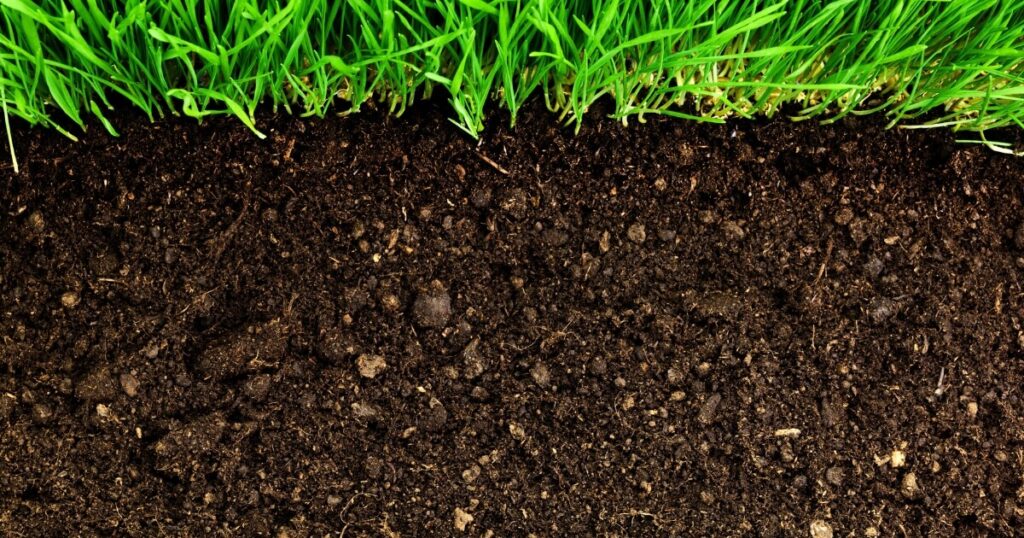
To really know what you’re working with, a soil test is the way to go. You can grab a kit at your local garden center. The results will reveal the pH level and nutrient content, giving you the lowdown on lime needs or fertilizer fixes.
Got your soil test results? Great! Now let’s talk about amping up that earthy goodness:
- Add Organic Matter: Compost is like a superfood smoothie for your soil. It boosts nutrients and improves texture, whether dealing with sand or clay.
- Get pH Balanced: Plants might not get enough nutrients if your soil is too acidic or too alkaline. Lime can sweeten acidic soil, while sulfur brings high pH down to earth.
- Aerate Like You Care: Compacted soil is no friend to roots. Aerating, basically poking holes in the turf, lets air, water, and nutrients reach deeper into the ground.
- Feed Your Soil: Use fertilizers based on what your soil test says it’s hungry for.
Lawn Planting Techniques
Are you starting from scratch or giving your yard a facelift?
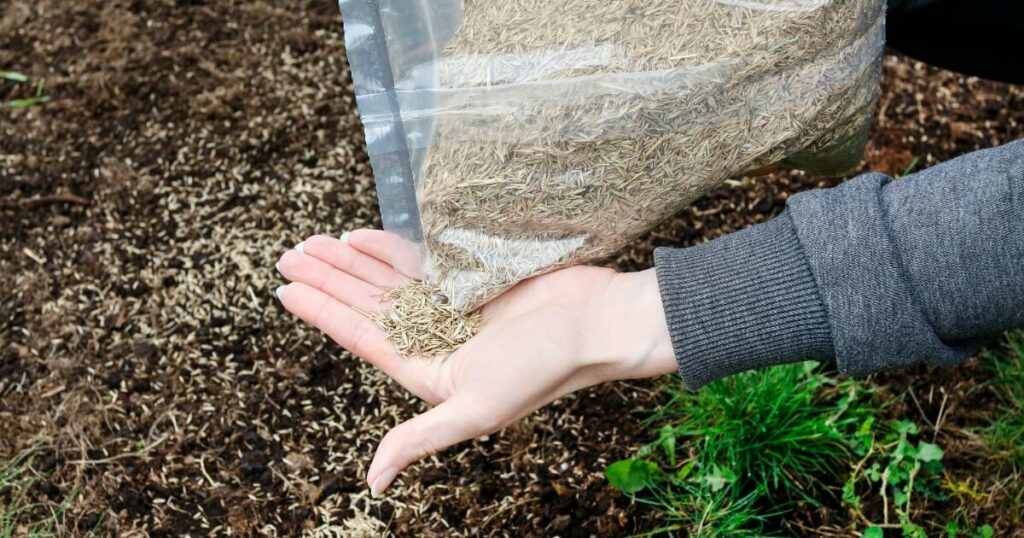
Whether you seed or sod, it’s all about giving those grass roots an environment where they can stretch out and settle in comfortably.
You can go the seed route for a custom mix or lay sod for instant gratification. Let’s look at both ways.
Steps for Seeding a New Lawn
Seeding takes patience, but you get to tailor it to your taste. Follow these steps for seeding success:
- Prep the Stage: Remove debris, break up clumps, and level the ground. A smooth surface means fewer tripping hazards and an even lawn.
- Choose Your Seed: Pick a blend that suits your climate, lifestyle, and soil type.
- Time It Right: Plant cool-season grasses in early fall and warm-season varieties in late spring to early summer.
- Spread the Love: Use a spreader to evenly distribute seeds. You don’t want clumps of grass competing for space and nutrients.
- Cover Up: A thin layer of soil or compost over the seeds helps protect them and keeps them moist. Birds are also something you’ll have to fend off while the seeds do their magic.
- Water: Keep your soil consistently moist but not waterlogged until seeds germinate and sprout.
- First Mow Matters: Wait until your grass is about 3 inches tall before the first trim to let roots establish.
How and When to Lay Sod
Sod is like rolling out a green carpet. Voilà, instant lawn!
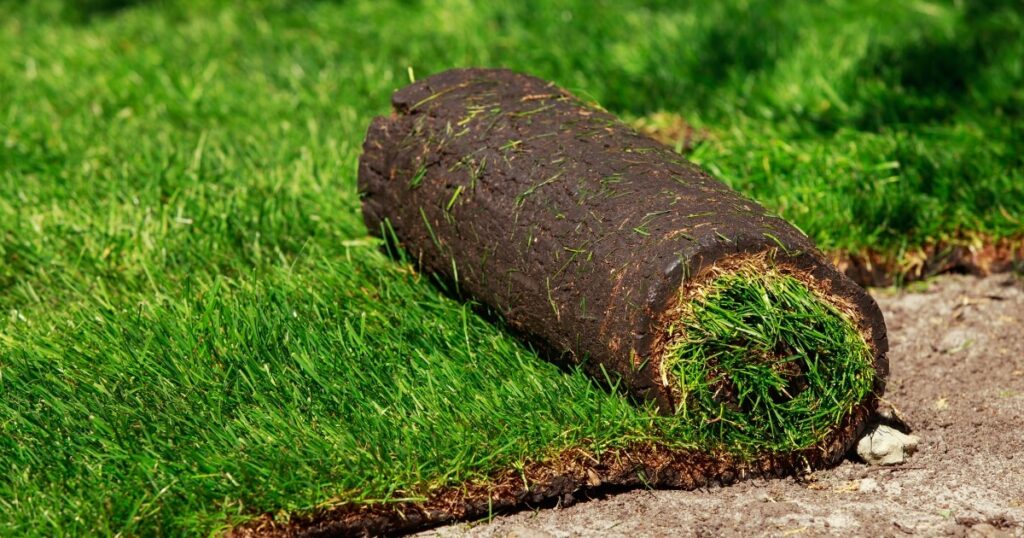
Here’s how you make that happen:
- Timing is Key: Spring and early fall are prime times for sod installation, allowing roots to settle without extreme heat stress.
- Groundwork: Prepare as you would for seeding: clean, level, and smooth out the area.
- Measure Twice: Know your yard’s square footage to order the right amount of sod, plus a little extra for mistakes.
- Lay it Down: Start along a straight edge like a driveway or sidewalk, and lay sod pieces tightly together without overlapping or leaving gaps.
- Roll With It: Use a lawn roller half-filled with water to press sod into contact with the soil underneath—this helps roots take hold faster.
- Water Like It’s Hot (Even If It’s Not): Soak your new sod deeply for the first week or two. It needs plenty of hydration to establish roots in its new home.
Basic Lawn Maintenance
Maintaining a lawn isn’t rocket science but requires some know-how.
Mowing
Common mowing mistakes include scalping your lawn (cutting too low), mowing wet grass (hello, uneven cuts!), and ignoring mower maintenance (a surefire way to shorten its lifespan).
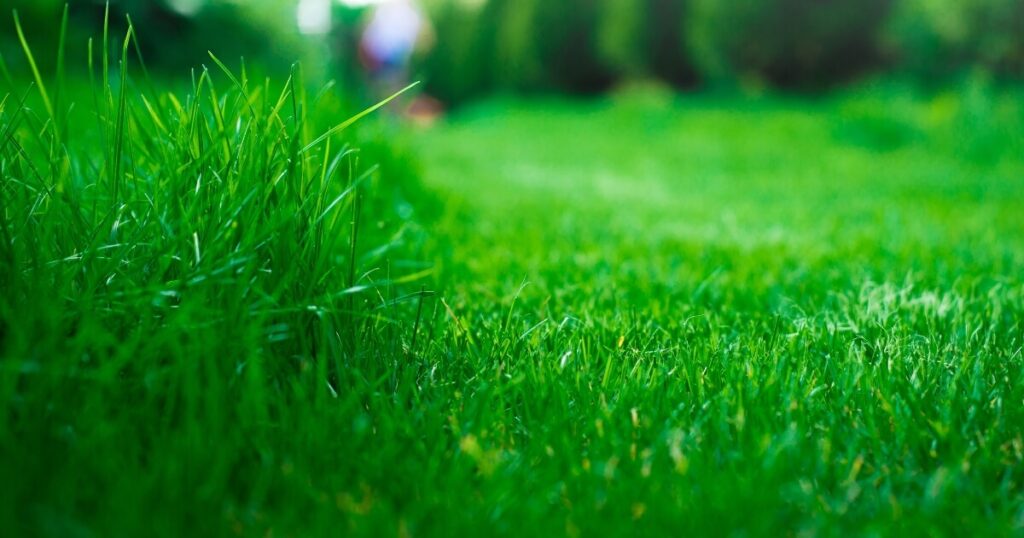
Here are some tips to keep your lawn looking sharp:
- Height Matters: Cutting too short can stress your grass while leaving it too long can invite pests. You should remove only the top third of the grass blades each time.
- Keep Blades Sharp: Dull mower blades tear the grass, causing damage and discoloration. Sharpen those blades to make clean cuts.
- Mix Up Your Pattern: Mowing in the same direction every time can compact soil and create ruts. Change it up to encourage upright growth.
- Leave Clippings: Those little bits of grass act as a natural fertilizer when you leave them on the lawn, so don’t bag ’em unless they’re clumping.
Watering
A common mistake is overwatering, which not only wastes water but also promotes shallow root growth and potential disease issues.
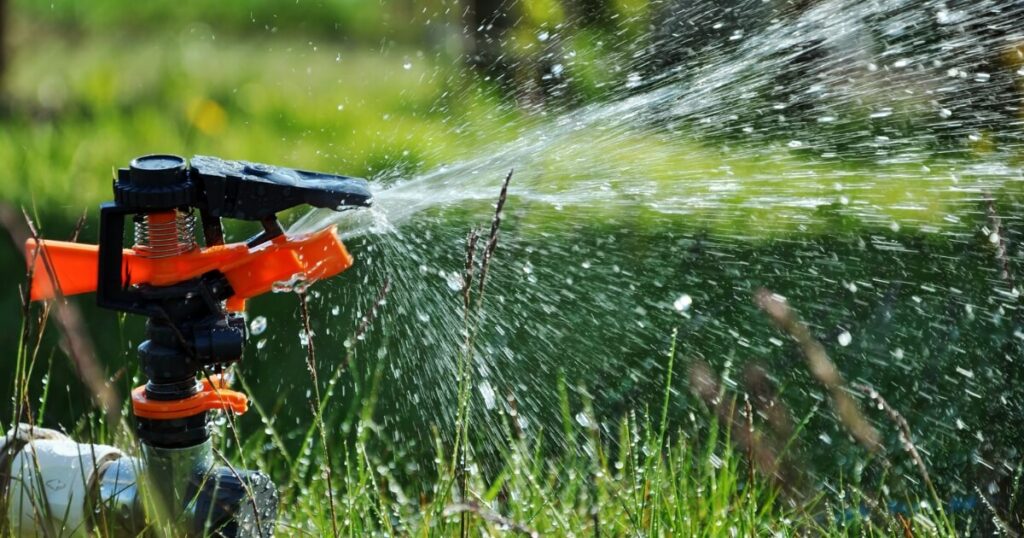
How much hydration does it really need?
- Deep Soaks: Infrequent but deep watering encourages roots to dive deep into the soil, making for a more drought-resistant lawn.
- Morning Rituals: Water early in the day to reduce evaporation and prevent fungal diseases that thrive in damp, cool conditions at night.
- Watch the Weather: If Mother Nature’s doing her part with regular rain, you can ease off on watering duties.
Fertilizing
Feeding your lawn is essential for its health and vigor—but it’s not just about slapping on any old fertilizer.
Over-fertilizing can lead to nutrient runoff into waterways and harm your lawn by causing rapid growth without proper root development.
- Read Labels: Choose a fertilizer based on what your soil test indicates your lawn needs.
- Seasonal Timing: Apply fertilizer at the right times. Typically early spring and fall is good for cool-season grasses. Late spring through summer for warm-season types.
- Application Smarts: Use a spreader for even application and follow instructions carefully to avoid burning your grass with excess product.
Weed and Pest Control
Don’t worry. With some smart strategies, you can keep weeds and pests under control.
Keep at it. Consistent care is the secret sauce for a pristine lawn!
Weeds
Some typical troublemakers include:
- Dandelions: Those yellow flowers might look cheerful, but they’re relentless.
- Crabgrass: This invader loves to fill in any bare spots in your lawn.
- Clover: While some enjoy its presence, it can take over quickly if left unchecked.
When it comes to weeding, think of it as a strategic game:
- Manual Removal: Good old-fashioned hand-pulling can be therapeutic and effective for small areas.
- Mulching: A layer of organic mulch can suppress weed seeds by blocking sunlight.
- Spot Treatment: Use targeted herbicides for persistent problems, but always follow the label directions to protect other plants and critters.
- Preventative Measures: Healthy lawns are the best defense. Thick grass leaves little room for weeds to establish.
Avoid blanket spraying of herbicides whenever possible because it’s like using a sledgehammer when you really need a scalpel.
Pests
Pests can be trickier since they’re not always as visible as weeds. Here’s how you deal with these sneaky critters:
- Regular Monitoring: Watch for signs of damage or the pests themselves. Early detection makes all the difference.
- Natural Predators: Encourage birds and beneficial insects that feed on common lawn pests by providing habitats for them.
- Cultural Practices: Mowing at the right height and aerating your soil can reduce pest problems significantly.
- Chemical Controls: If all else fails, specific pesticides may be necessary. Use them judiciously, targeting only affected areas to minimize environmental impact.
Remember, not all insects are bad. Many are valuable allies in your lawn and garden. So before declaring war on all six-legged creatures, make sure you know which is which!
Seasonal Lawn Care Tips
As the seasons turn, so do the needs of your lawn.
Don’t neglect seasonal lawn care just because everything looks okay at first glance!
Here’s how to keep your turf in tip-top shape all year round.
Spring: Starting your Lawn Care Season
Spring is like nature’s opening day for gardeners, and it’s time to get your lawn back in the game after winter. Here’s how you kick things off:
- Rake It Up: Begin with a good raking to remove thatch and debris, which lets sunlight and air reach the soil.
- Weed Out Troublemakers: Early spring is the prime time to tackle weeds before they take hold.
- Test and Amend Soil: If you didn’t test in the fall, do it now. Adjust pH levels and add nutrients as needed.
- Overseed if Necessary: Fill in bare spots with grass seed to encourage a full, lush lawn.
- Start Mowing: Once your grass starts growing, mow at a higher setting to encourage strong roots.
Summer: Maintenance During Heat and Drought
Summer brings on the heat, which can be tough on your green oasis. Keep your cool with these tips:
- Water Smartly: Water deeply but less frequently to encourage drought tolerance—early morning is best.
- Mow Higher: Raise your mower blade during hot months. Longer grass shades roots and retains moisture better.
- Keep an Eye on Pests: Insects are more active in summer, so monitor for damage and manage pests as needed.
- Fertilize Warm-Season Grasses: If you have warm-season turf, this is its time to shine, so give it the nutrients it needs.
Fall: Preparing your Lawn for Winter
Fall isn’t just about pumpkin spice. It’s important for getting your lawn ready for winter.
- Aerate Compacted Soil: This helps oxygen, water, and nutrients reach root systems more effectively.
- Apply Fall Fertilizer: For cool-season grasses, a fall feeding helps build strong roots for next year.
- Continue Weeding: Don’t let weeds establish over winter. Deal with them now.
- Final Mowings: Gradually lower your mower’s blade for the last few cuts before winter sets in.
Tools and Equipment
Having the right tools can turn lawn care from a chore into a breeze. Whether you’re just starting or looking to upgrade your arsenal, here’s what you need to know about choosing and maintaining your equipment.
By starting with essential tools, choosing wisely based on your needs, and maintaining them properly, you’ll be well-equipped to handle any lawn care task thrown your way. Remember: good tools are like good friends—they make any job more enjoyable!
Starting with the basics will set you up for success. Here are some must-haves:
- Lawn Mower: The cornerstone of lawn care. Choose one that fits the size of your yard and your storage space.
- String Trimmer: A trimmer is indispensable for those hard-to-reach spots around edges and fences.
- Garden Rake: Ideal for clearing debris and thatch to keep your lawn clean and healthy.
- Spreader: A spreader ensures even distribution of seed, fertilizer, and other lawn treatments.
- Hose with Spray Nozzle: Invest in a durable hose with an adjustable nozzle to control water flow for watering tasks.
- Watering Can: Great for spot-watering or applying liquid fertilizers to targeted areas.
Choosing equipment is like finding a good pair of jeans—it needs to fit well and last long. Keep these pointers in mind:
- Read Reviews: Before buying, check out what others say about durability and ease of use.
- Ergonomics Matter: Comfortable handles and adjustable settings can make all the difference during long yard work sessions.
- Maintenance is Key: Clean tools after each use, sharpen blades regularly, and winterize engines at the end of the season.
- Storage Solutions: Protect your investment by storing tools in a dry place out of the elements.
In Summary
From understanding different grass types to mastering mowing and watering techniques, we’ve covered a lot of ground. Remember, a great lawn is all about choosing the right grass for your climate, prepping your soil with love, planting with care, and sticking to a solid maintenance routine.
Don’t forget that every season has its own playbook for keeping your turf in top shape. And when it comes to tools and equipment, pick what works best for you and keep those gadgets well-maintained.
Your lawn is a living, breathing thing that will grow and change just as you do. Stay curious, keep learning, and don’t be afraid to get a little dirt under those fingernails.